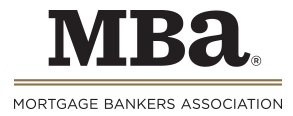WASHINGTON — (RealEstateRama) — June is national LGBT Pride Month, and in recognition, the National Association of Realtors® has released its first-ever Profile of Lesbian, Gay and Bisexual Buyers and Sellers.
The report, which utilizes four years of data from NAR’s Profile of Home Buyers and Sellers, analyses the differences between LGB and other buyers and sellers. The report found that all groups — those identifying LGB and heterosexual — were most likely to purchase real estate because of a desire to own their own home1.
“The American Dream of homeownership traverses across the spectrum of our society — including sexual orientation — and Realtors® always have and will continue to advocate so that anyone who wants to, and is capable of purchasing a home, is able to do so,” said NAR President John Smaby, a second-generation Realtor® from Edina, Minnesota and broker at Edina Realty. “Realtors® have always embraced the significance of the protections secured by the Fair Housing Act, and have encouraged efforts to extend them by amending our Code of Ethics in 2009 to prohibit discriminations based on sexual orientation and gender identity.”
Home Buyer/Seller Characteristics
Bisexual home buyers were the most likely to indicate they were first-time homebuyers (58%), followed by lesbian and gay buyers (36%) and heterosexuals (32%). Bisexuals were also the youngest buyers, a median age of 36 years old, and had the lowest median income of $62,400. In comparison, lesbian and gay buyers were the oldest buyers at 45 years old. Heterosexual buyers reported a median age of 44 and a median income of $91,200, similar to $92,900 for lesbian and gay buyers.
In addition to being the most likely to identify as first-time home buyers, bisexual sellers were the most likely to identify as first-time home sellers at 50%. Lesbian/gay and heterosexual first-time sellers each registered at 36%.
“The number of home buyers and sellers who identify as lesbian, gay or bisexual has remained steady at 4% since we first included the question in our HBS survey in 2015,” said Dr. Lawrence Yun, NAR chief economist. “Given that Millennials now make up 37% of home buyers2 and attitudes regarding sexual orientation continue to shift even among Generation Z, we expect to see this percentage increase in future surveys as younger generations are more likely to self-identify as LGB.”
Bisexual home buyers were less likely to identify as white/Caucasian than lesbian/gay or heterosexual buyers (77%, compared to 88% and 85%, respectively), and were nearly twice as likely to identify as Hispanic than both groups (13% compared to 7%). Fourteen percent of bisexual buyers were born outside of the U.S., versus 7% of lesbian and gay buyers. Eight percent of bisexual buyers reported speaking a primary household language other than English, more than lesbian and gay buyers (4%) and heterosexual buyers (2%).
More than one-third of bisexual buyers identified as single females (38%), while a quarter of lesbian and gay buyers identified as single men (25%). Lesbian and gay buyers were also the group most likely to identify as an unmarried couple at 22%, compared to 15% of bisexual buyers and 7% of heterosexual buyers. Heterosexual buyers were the most likely to identify as a married couple (66%), followed by lesbian and gay buyers (38%) and bisexual buyers (34%).
While heterosexual buyers were the most likely to have children in their households (38%), bisexual buyers were nearly three times as likely to have children in their households compared to lesbian and gay buyers (29% to 11%).
Characteristics of Homes Purchased
Bisexual buyers purchased the smallest and oldest homes, with a median square footage of 1,840 square feet and median year built of 1966. Lesbian and gay buyers followed with a median square footage of 1,900 and a median year built of 1974, while heterosexual buyers purchased the largest and newest homes (2,060 median square feet, 1985 median year).
Bisexual buyers were the most likely to purchase a detached single-family home (86%), while lesbian and gay buyers were the least likely (79%). Heterosexual buyers were the most likely to purchase a multi-generational home at 13%, compared to 10% of LGB buyers.
Lesbian and gay buyers were most likely to purchase in an urban area or a city center (28%), while bisexual buyers were most likely to buy a home in a small town (22%). All sexual orientations were equally likely to purchase in a resort or recreation area, 2%.
Bisexual buyers were most likely to have made at least one compromise in their home purchase, most likely on the price (28%), style of home (23%) or distance from their jobs (23%). Lesbian and gay buyers were the least likely to have compromised on convenience to schools (7%).
The data used for the report is an aggregation of data from responses from the 2015 through 2018 NAR Profile of Home Buyer and Sellers, totaling 22,521 responses. Four percent of all respondents identified as lesbian, gay or bisexual (3% and 1%, respectively), making for a total sample size of 918 LGB buyers and sellers.
The National Association of Realtors® is America’s largest trade association, representing more than 1.3 million members involved in all aspects of the residential and commercial real estate industries.
###
1Lesbian/Gay 34%, Bisexual 43%, Heterosexual 29%
2The 2018 edition of NAR’s Profile of Home Buyers and Sellers
Media Contact: Jane Dollinger 202-383-1042


